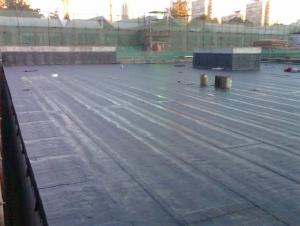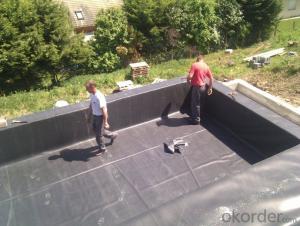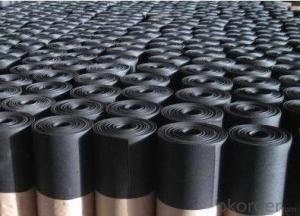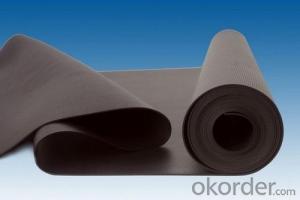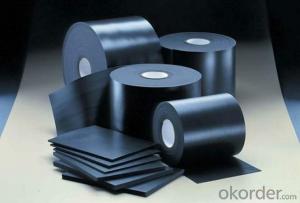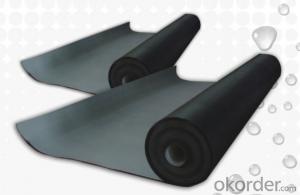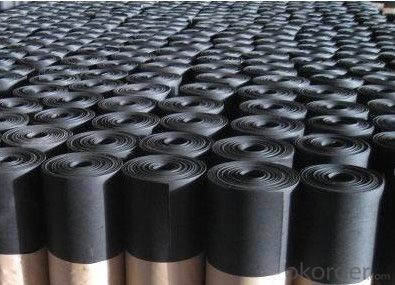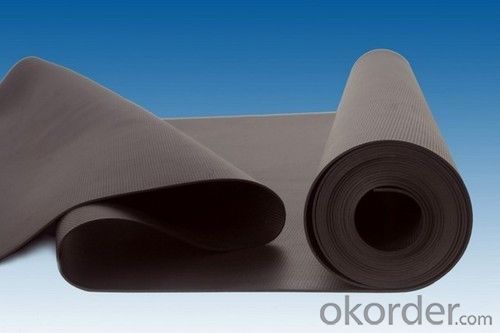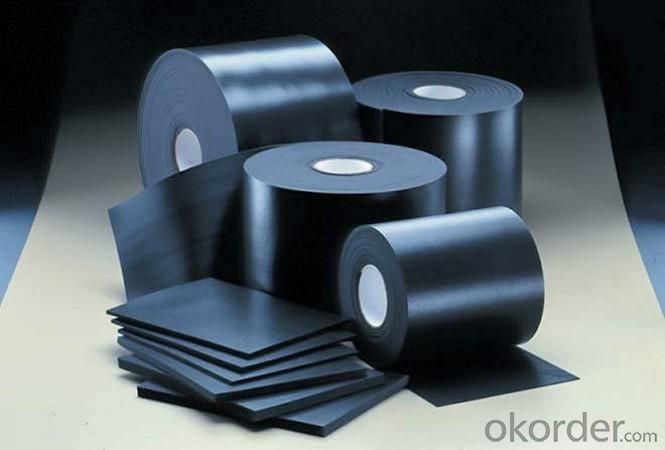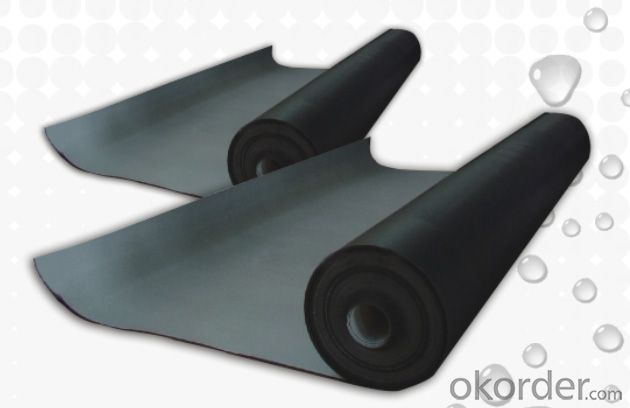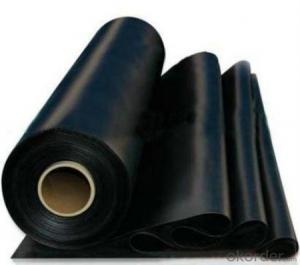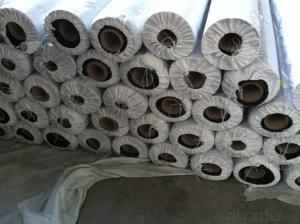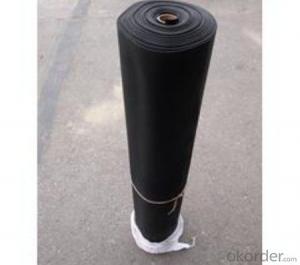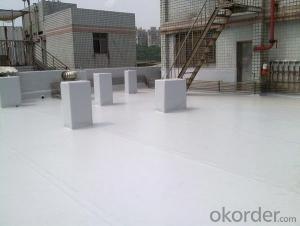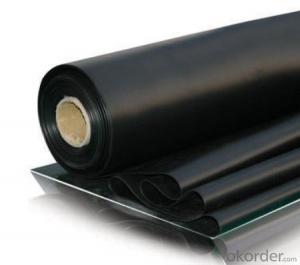Vulcanized EPDM Waterproof Membrane for Exposing Shunshine
- Loading Port:
- Shanghai
- Payment Terms:
- TT or LC
- Min Order Qty:
- 20000 m²
- Supply Capability:
- 1200000 m²/month
OKorder Service Pledge
OKorder Financial Service
You Might Also Like
Vulcanized EPDM Waterproof Membrane for Exposing Shunshine
Description Of Vulcanized EPDM Waterproof Membrane for Exposing Shunshine:
1. EPDM waterproof membrane is made from ternary ethylene-propylene rubber, which is for waterproofing of exposed and non-exposed applications.
2. EPDM waterproof membrane production adopts the world-advanced equipment of cold feeding extrusion and continuous vulcanization technology.
3. EPDM waterproof membrane is of high elasticity among high polymer waterproof materials and becomes a world-popular waterproofing material.
Main Features of Vulcanized EPDM Waterproof Membrane for Exposing Shunshine:
1. Excellent physical and mechanical performance
2. High tearing resistance
3. Good deformation adaptability
4. High puncture resistance
5. High aging resistance
6. UV resistance
Specifications of Vulcanized EPDM Waterproof Membrane for Exposing Shunshine:
| Material | EPDM Rubber |
| Size | 1.2m (width)*20m (length) or customized, weldable type 2.05m or 4m width |
| Thick | 1.2mm, 1.5mm, 2.0mm |
| Type | Vulcanized & Weldable |
| Pattern | Non-reinforced (homogeneous) |
| Certificate | ISO9001/14001 |
Applications of Vulcanized EPDM Waterproof Membrane for Exposing Shunshine:
1.Roofs, Basement, Toilets
2. Industrial and civil building waterproofing
3. Geosynthetic liner for swimming pool, channels, irrigation system
4. Especially suitable for projects with high requirements in durability, anti-corrosion and deformation.
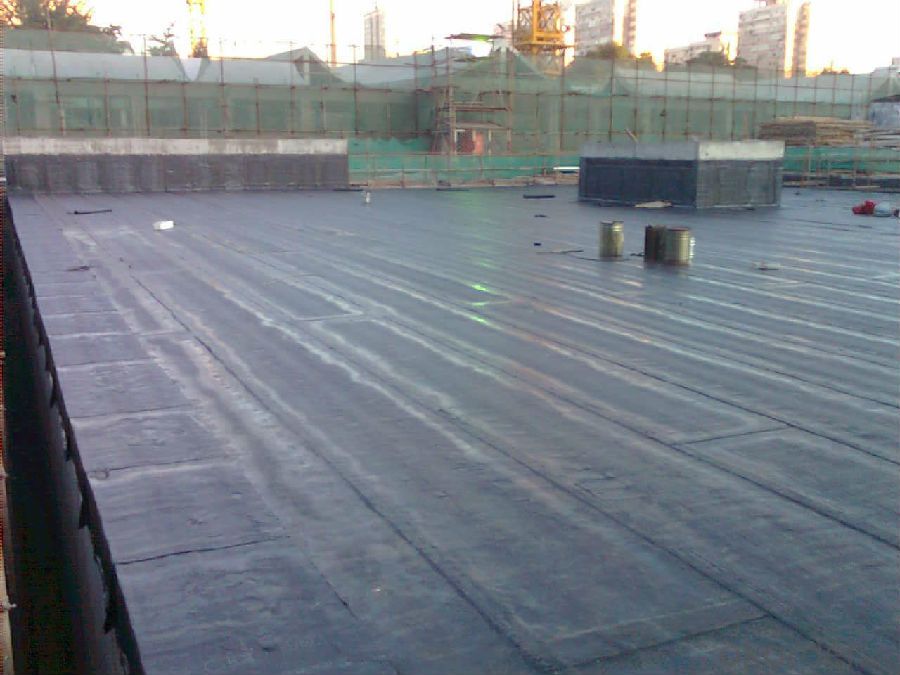
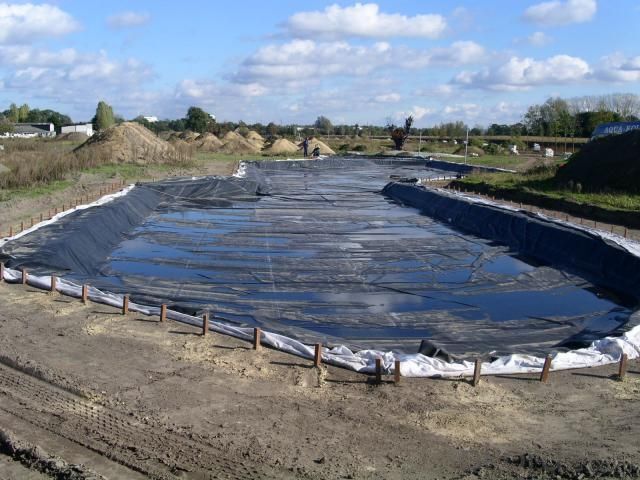

IMages of Vulcanized EPDM Waterproof Membrane for Exposing Shunshine:
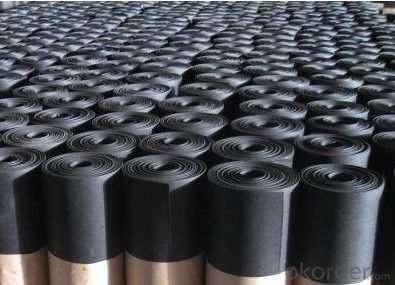



FAQ of Vulcanized EPDM Waterproof Membrane for Exposing Shunshine:
1. What are we supplying?
We are specialized in producing Colorful Asphalt Roof Shingle, SBS/APP modified bitumen waterproof membrane, Self adhesive bitumen waterproof membrane, PVC waterproofing membrane, EPDM rubber roofing membrane, Single Component Polyurethane Waterproof Coating, and Spray Polyurea Waterproof Coating
.
2. How Many years experience do we have?
We have been exported to more than 20 countries in the past 15 years.
3. How long do we usually reply your request?
We always reply our customer within 24 hours.
- Q: Is a waterproofing membrane suitable for use in areas with high groundwater levels?
- Yes, a waterproofing membrane is suitable for use in areas with high groundwater levels. A waterproofing membrane is designed to prevent water penetration and can be effective in creating a barrier against groundwater. These membranes are typically made from materials such as bitumen, PVC, or EPDM, which are highly resistant to water and can withstand high hydrostatic pressure. They are specifically engineered to provide a watertight seal, preventing water from seeping into structures or underground spaces. Therefore, a waterproofing membrane is an ideal solution for areas with high groundwater levels, as it can effectively protect against water intrusion and potential damage to buildings or infrastructure.
- Q: Can a waterproofing membrane be used for shopping malls or commercial buildings?
- Yes, a waterproofing membrane can be used for shopping malls or commercial buildings. Waterproofing membranes are commonly used in construction to protect the structure from water damage. They are specifically designed to create a barrier against water infiltration, preventing leaks and moisture buildup. By applying a waterproofing membrane to the building's exterior, it helps to ensure the longevity and durability of the structure. Shopping malls and commercial buildings often have large surface areas that are exposed to different weather conditions, making them susceptible to water damage. Therefore, using a waterproofing membrane is an effective solution to protect these buildings and maintain their structural integrity.
- Q: Can a waterproofing membrane be used for elevator shafts and stairwells?
- Yes, a waterproofing membrane can be used for elevator shafts and stairwells to provide a barrier against water infiltration and prevent moisture-related damages.
- Q: Are waterproofing membranes resistant to thermal cycling?
- Waterproofing membranes typically exhibit resistance to thermal cycling. Their design allows them to endure temperature variations without compromising their efficacy. Thermal cycling pertains to the repetitive expansion and contraction of materials caused by temperature fluctuations. These membranes are constructed to possess exceptional dimensional stability, enabling them to expand and contract with minimal distortion. By withstanding thermal cycling, these membranes retain their integrity and effectively prevent water infiltration, even in harsh temperature conditions. Nonetheless, it is crucial to acknowledge that the degree of resistance to thermal cycling may differ based on the specific type and quality of the waterproofing membrane employed.
- Q: How are waterproofing membranes installed?
- To safeguard buildings and structures from water damage, the application of waterproofing membranes is essential. Typically, the installation process involves multiple steps. Initially, the designated surface must be adequately prepared. This entails cleansing the surface and eliminating any debris or loose materials. Ensuring the surface is smooth and devoid of irregularities or cracks is of utmost importance. Following this, a primer is administered to the surface. This aids in establishing a robust bond between the membrane and the surface. Typically, a brush or roller is employed to apply the primer, and it is crucial to allow it to completely dry before proceeding to the subsequent step. Once the surface is primed, the waterproofing membrane can be installed. Various types of membranes are available, including sheet membranes, liquid membranes, and peel-and-stick membranes. The selection of the membrane type depends on the project's requirements and the surface being waterproofed. For sheet membranes, the material is typically unrolled and carefully positioned over the primed surface. It is crucial to ensure the proper alignment of the membrane, devoid of any wrinkles or air pockets. Subsequently, the membrane is firmly pressed down to establish a robust bond with the surface. Liquid membranes are usually applied using a brush or roller. The liquid is evenly spread over the primed surface, and multiple coats may be applied to ensure a comprehensive and effective waterproofing layer. Each coat must be allowed to dry before proceeding to the next. Peel-and-stick membranes are the simplest to install. The backing is peeled off the membrane, and it is meticulously pressed onto the primed surface. The adhesive on the membrane's back establishes a strong bond with the surface. Once the membrane is installed, any seams or joints must be adequately sealed. This is typically achieved using waterproofing tape or sealant. The objective is to create a continuous and watertight barrier to prevent any water from penetrating. Overall, the installation process for waterproofing membranes necessitates meticulous preparation, accurate application, and attention to detail. It is crucial to adhere to the manufacturer's instructions and utilize appropriate materials and techniques for the specific membrane being installed. By doing so, a dependable and efficient waterproofing system can be established, safeguarding the building or structure from water damage.
- Q: Can a waterproofing membrane be used on retaining walls?
- Yes, a waterproofing membrane can be used on retaining walls. Retaining walls are often exposed to moisture and hydrostatic pressure, which can lead to water infiltration and deterioration of the structure. Applying a waterproofing membrane on the retaining wall can help prevent water penetration, protect the wall from moisture-related damage, and prolong its lifespan. The membrane acts as a barrier, preventing water from seeping into the wall and causing potential issues such as efflorescence, cracks, or erosion. It is important to choose a waterproofing membrane that is specifically designed for below-grade applications and is capable of withstanding the pressure exerted by the retained soil. Additionally, proper installation techniques and appropriate drainage systems should be considered to ensure the effectiveness of the waterproofing membrane on retaining walls.
- Q: Can a waterproofing membrane be used on precast concrete block surfaces?
- Precast concrete block surfaces can benefit from the application of a waterproofing membrane. These membranes are commonly used to safeguard below-grade structures, like basements and foundations, from water infiltration. When constructing these structures, precast concrete blocks are frequently utilized, and the use of a waterproofing membrane can prevent water from seeping into the concrete and causing harm. The membrane acts as a barrier, prohibiting water from passing through while still allowing the concrete to breathe and release any accumulated moisture. Furthermore, waterproofing membranes can enhance the overall durability and lifespan of precast concrete blocks by shielding them from moisture-related problems such as cracking, spalling, and corrosion. It is crucial to select a waterproofing membrane that is specifically designed for below-grade applications and is compatible with concrete surfaces to ensure proper adhesion and long-term efficacy.
- Q: What is the difference between construction non-vulcanized waterproofing membrane and vulcanized waterproofing membrane?
- Non-vulcanized rubber waterproofing membrane: from SR or SR and asphalt blends by mixing, rolling made of coil, without vulcanization can use the product. The bonding between the coils and their bonding properties with the mortar is good, the manufacturing is convenient, the price is low, but the tensile strength is low. Can be divided into two types of rubber and rubber asphalt. Rubber type commonly used SBR and other SR production. Generally used for civil construction roof waterproof.
- Q: Can a waterproofing membrane be used on stainless steel surfaces?
- Yes, a waterproofing membrane can be used on stainless steel surfaces. Stainless steel is a durable and non-corrosive material that is commonly used in various industries. However, it is not completely immune to water damage or corrosion, especially in harsh environments. Applying a waterproofing membrane on stainless steel surfaces can provide an additional layer of protection against moisture, preventing potential water damage, rusting, and corrosion. It is important to ensure that the waterproofing membrane is compatible with stainless steel and applied correctly to ensure proper adhesion and long-lasting protection.
- Q: Are there any special tools required for installing a waterproofing membrane?
- Yes, there are several special tools required for installing a waterproofing membrane. These tools may vary depending on the specific type of membrane being installed, but some common tools include a trowel or brush for applying the membrane, a utility knife for cutting the membrane to size, a roller for ensuring proper adhesion, and a heat gun for activating any adhesive properties of the membrane. Additionally, other tools such as a measuring tape, level, and caulking gun may be necessary for proper installation. It is important to consult the manufacturer's instructions and recommendations to ensure that the correct tools are used for the specific membrane being installed.
Send your message to us
Vulcanized EPDM Waterproof Membrane for Exposing Shunshine
- Loading Port:
- Shanghai
- Payment Terms:
- TT or LC
- Min Order Qty:
- 20000 m²
- Supply Capability:
- 1200000 m²/month
OKorder Service Pledge
OKorder Financial Service
Similar products
Hot products
Hot Searches
Related keywords
